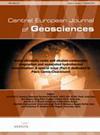大气中空气污染物的扩散模拟:综述
引用次数: 177
摘要
空气污染物在大气中扩散的模拟是最重要和最具挑战性的科学问题之一。在一些自然和人为事件中,被动或化学活性化合物被排放到大气中。这些化学物质的影响会对我们的环境和人类健康产生严重影响。模拟空气污染物的扩散可以预测这种影响。因此,制定各种模式战略是政府和科学界的关键要素。我们在这里简要回顾一下空气污染物在大气中扩散的数学模型。我们讨论了几种模型工具和策略的优缺点,即高斯模型、拉格朗日模型、欧拉模型和CFD模型。我们特别关注这个多学科研究领域的几个最新进展,如使用图形处理单元的并行计算,或自适应网格细化。本文章由计算机程序翻译,如有差异,请以英文原文为准。
Dispersion modeling of air pollutants in the atmosphere: a review
Modeling of dispersion of air pollutants in the atmosphere is one of the most important and challenging scientific problems. There are several natural and anthropogenic events where passive or chemically active compounds are emitted into the atmosphere. The effect of these chemical species can have serious impacts on our environment and human health. Modeling the dispersion of air pollutants can predict this effect. Therefore, development of various model strategies is a key element for the governmental and scientific communities. We provide here a brief review on the mathematical modeling of the dispersion of air pollutants in the atmosphere. We discuss the advantages and drawbacks of several model tools and strategies, namely Gaussian, Lagrangian, Eulerian and CFD models. We especially focus on several recent advances in this multidisciplinary research field, like parallel computing using graphical processing units, or adaptive mesh refinement.
求助全文
通过发布文献求助,成功后即可免费获取论文全文。
去求助
来源期刊

Central European Journal of Geosciences
GEOSCIENCES, MULTIDISCIPLINARY-
自引率
0.00%
发文量
0
审稿时长
>12 weeks
 求助内容:
求助内容: 应助结果提醒方式:
应助结果提醒方式:


